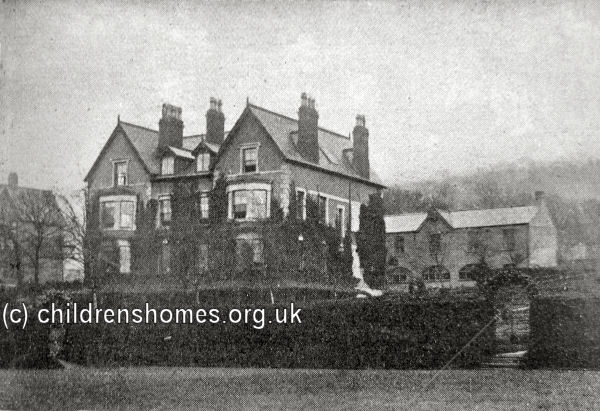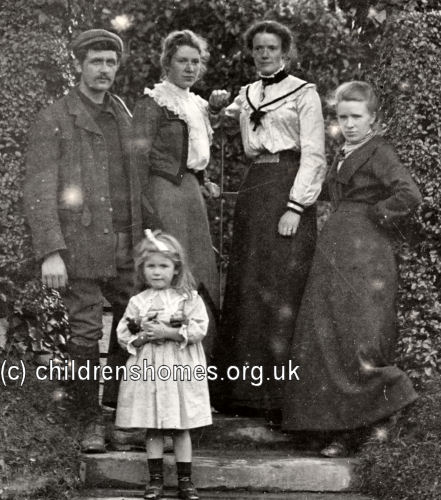Oakamoor Boys' Home, Colwyn Bay, Carnarvonshire, Wales
The Oakamoor Boys' Home was founded by Miss Isabella C Bolton in about 1890 at Oakamoor, near Cheadle, Staffordshire. In 1895, the Home relocated to Colwyn Bay in North Wales.
The Home's first premises in Colwyn Bay appear to have been at Newton Villa, Hawarden Road. On June 8th, 1895, the establishment was accredited as a Certified School, allowing it to receive boys boarded out by the workhouse authorities.
The following year, it moved to a house on Bay View Road. A new certification was granted on June 12th, 1896. The premises could accommodate up to 12 boys, aged from 2 to 6 years at their date of admission.
In early 1900, the Home transferred to a property at the west side of Coed Pella Road, which adopted the name Oakamoor. The premises had originally been built as a pair of fashionable lodging houses, then converted to a single residence by a Mr Poppin. Under the Home's occupancy, up to 20 boys could be housed. The establishment received its new Certified School accreditation on February 12th, 1900.

Oakamoor Boys' Home from the north-east, Colwyn Bay, c.1900. © Peter Higginbotham

Oakamoor Boys' Home from the north-west, Colwyn Bay, c.1900. © Peter Higginbotham

Oakamoor Boys' Home from the north, Colwyn Bay, c.1900. © Peter Higginbotham
On the above photograph, the names of those included are given as Will Halliday, Nellie (the small child?), Kate, Flo and Em. According to the 1901 census, Will Halliday was the Home's gardener, and Nellie (Ellen) his daughter.

Oakamoor Boys' Home, Colwyn Bay, c.1900. © Peter Higginbotham

Oakamoor Boys' Home inmates, Colwyn Bay, c.1900. © Peter Higginbotham
Following the death of Miss Bolton's father, who had supported the institution financially, the Home struggled to keep going. It finally closed in 1906. The premises then became home to the Colwyn Bay and District Constitutional Club, with sporting facilities in the grounds including tennis and bowls. The building was demolished in around 1999 and modern flats now occupy the site.
Records
Note: many repositories impose a closure period of up to 100 years for records identifying individuals. Before travelling a long distance, always check that the records you want to consult will be available.
- None identfied at present — any information welcome.
Bibliography
- Certified Schools page on this website.
Links
- None identified at present.
Except where indicated, this page () © Peter Higginbotham. Contents may not be reproduced without permission.


